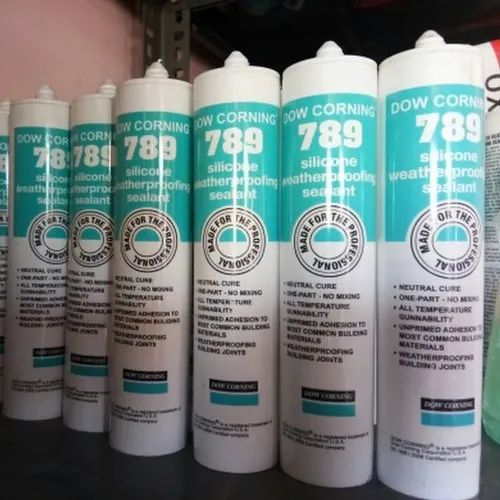
Why Choose Silicone Sealant?
Silicone Sealant is a very popular type of adhesive caulk, used in many different types of repairs and construction. It can withstand high temperatures, resists moisture and humidity, and is non-reactive and doesn’t promote mould growth.
This makes it a very effective choice for gluing or sealing surfaces that are exposed to extreme heat and cold. It’s also a great material for bonding materials that are likely to move due to pressure, movement or exposure to the weather.
Durability
The durability of silicone sealants is one of the primary reasons that professionals and DIY enthusiasts choose this type of caulk and adhesive. It can withstand severe weather conditions and is also resilient against the ravages of moisture. This is due to the rubbery nature of dried silicone and its high elasticity.
Silicone Sealants can also be used to bond and adhere materials that other glues cannot, such as silicone to silicone. This is important in medical products such as pacemakers, cochlear implants and hydrocephalus shunts. They can also be used to adhere glass and plastic components in craft projects, such as terrariums or aquariums.
Because of their excellent durability, silicone sealants can last up to 20 years in some cases. However, it is recommended to check your caulking on a regular basis, especially in areas where you can see water damage, or areas where the drafts are strong.
The durability of silicone is enhanced by the fact that it does not react to extreme heat or cold, which can cause other types of adhesives and caulk to degrade or break down over time. In addition, the longevity of silicone is increased by storing it in a cool, dry place and avoiding excessive exposure to heat or cold. It is also important to understand that a general rule of thumb is that the life of an elastomer will be halved for every increase in temperature.
High Temperature
Silicones are able to maintain a stable temperature without losing their properties, which makes them ideal for a variety of Silicone Sealant applications. Depending on the application, specific types of silicone are used. These include mirror silicones, which can adhere to glass and mirrors without damaging the black glaze layer, and bathroom silicones, such as Akfix 900N, which is resistant to mould growth, mildew and corrosion and is ideal for sealing bathrooms and kitchens.
High-temperature silicones are also very popular in automotive applications, where they can seal components that will be exposed to constant or intermittent heat. They are often used for oil and water pump gaskets, valve covers, axle bearings, hoses and air conditioning compressor gaskets. They can also be found in industrial applications for gaskets and connections that will be subjected to continuous high temperatures, such as on oven belts or bag filters on smoke stacks.
To use a silicone sealant, clean and dry the surface that will be applied to. Then, apply a small bead of the product to the surface. It can then be pressed together and, once cured, the seal will be resilient and durable. The same principles can be applied to a wider range of DIY and craft projects, such as sealing cracks in concrete or masonry. For best results, cut the nozzle tip at an angle and squeeze out just enough to make a small bead.
Resistance to Moisture
Silicone sealants are highly resistant to moisture and the elements. They can withstand temperature fluctuations, wind oscillations, seismic movements and are also weather-proof, which makes them a preferred building material for builders and renovators in Brisbane. They are able to bond a variety of materials, including glass, ceramics, metals, concrete and plastic.
This makes silicone an ideal choice for sealing around sinks and bathtubs, in showers and bathrooms, as well as Silicone Sealant for repairing aquariums. They are also suitable for use in kitchens and on windows as they are water-repellent and don’t promote mould growth.
There are several types of silicone adhesives and sealants on the market, each designed for specific applications. For example, a mirror silicone is specifically created to adhere to the black layer of a glass or window, ensuring it stays in place without becoming discoloured over time.
Another type of silicone sealant is fluorosilicone, which is more durable than acrylic caulks and dries to the touch in a shorter period of time. It is also highly resistant to solvents, oils, fuels and alkaline and has excellent mechanical properties. In addition, fluorosilicone caulks can be used on a wider range of surfaces and are often used in industrial and commercial applications. They can withstand extremely high temperatures, do not react to chemicals and are odorless.
Chemical Reactivity
Silicones tend to be less reactive than other types of sealants, adhesives and caulks. This means they are generally able to withstand a wider range of temperature fluctuations. Dried silicones also have a rubbery nature, meaning they can help cushion surfaces that are likely to move, either through natural stress or changes in climate.
This helps them to provide a strong, durable seal across joints in a wide variety of materials, from metals and plastics to glass and wood. This makes them ideal for use in areas prone to moisture, such as bathrooms and kitchens. They can also be used in outdoor applications, with some varieties of silicone sealant designed to withstand exposure to the elements.
The chemical reactivity of silicones is also an important factor to consider when selecting the right type of sealant for your project. For example, if you are working with porous surfaces like masonry or plaster, you should select an acetoxy silicone sealant to achieve the strongest and fastest bond. Neutral cure silicones, on the other hand, are better suited to non-porous surfaces and are typically much slower to dry, making them the best option for use with wood and scratchable plastics.
It is important to remember that while silicone adhesives are resistant to a wide range of weathering and environmental conditions, they are not suitable for load-bearing applications. It is also essential to clean any application area immediately after sealing with silicones, using a special silicone remover.



